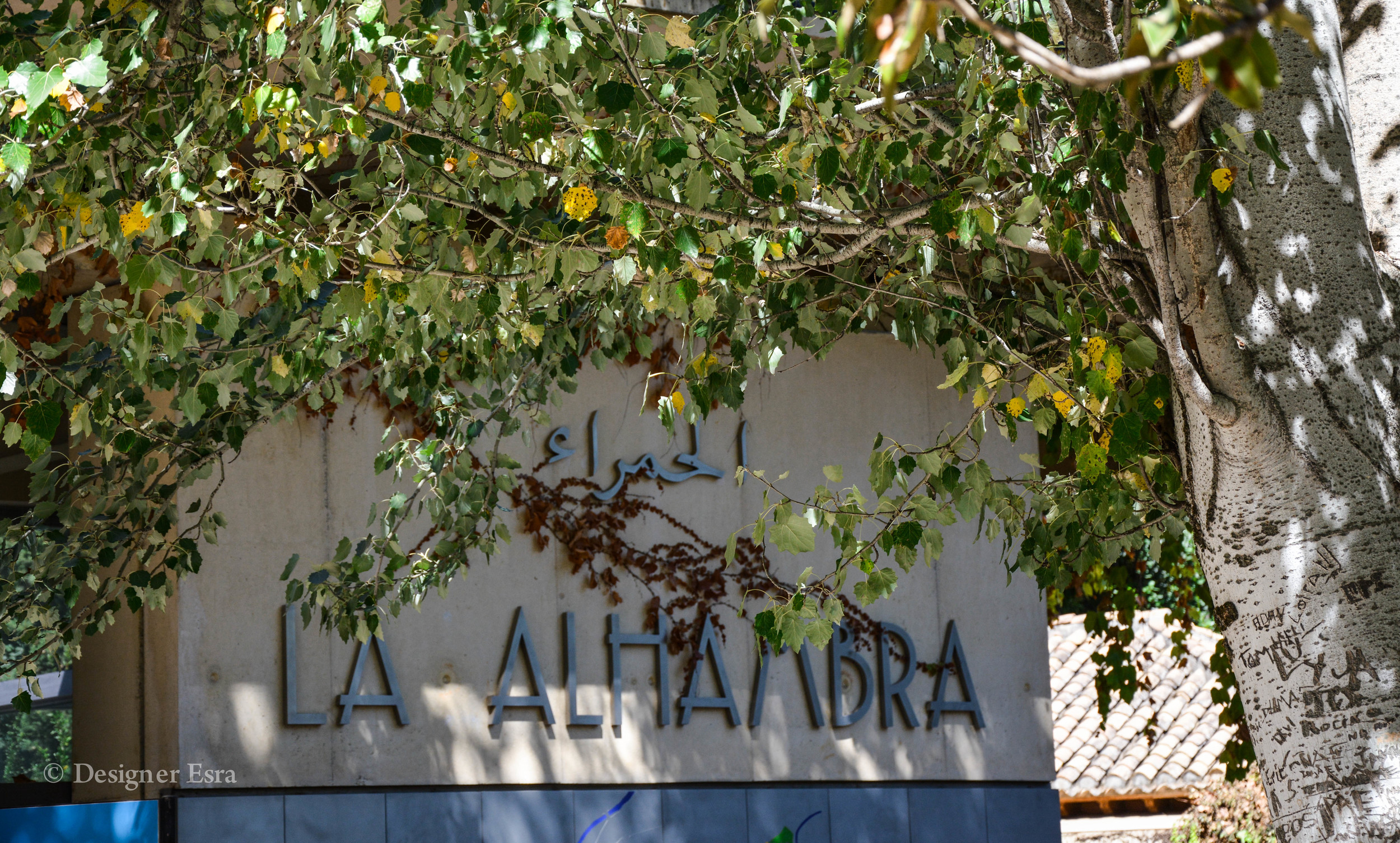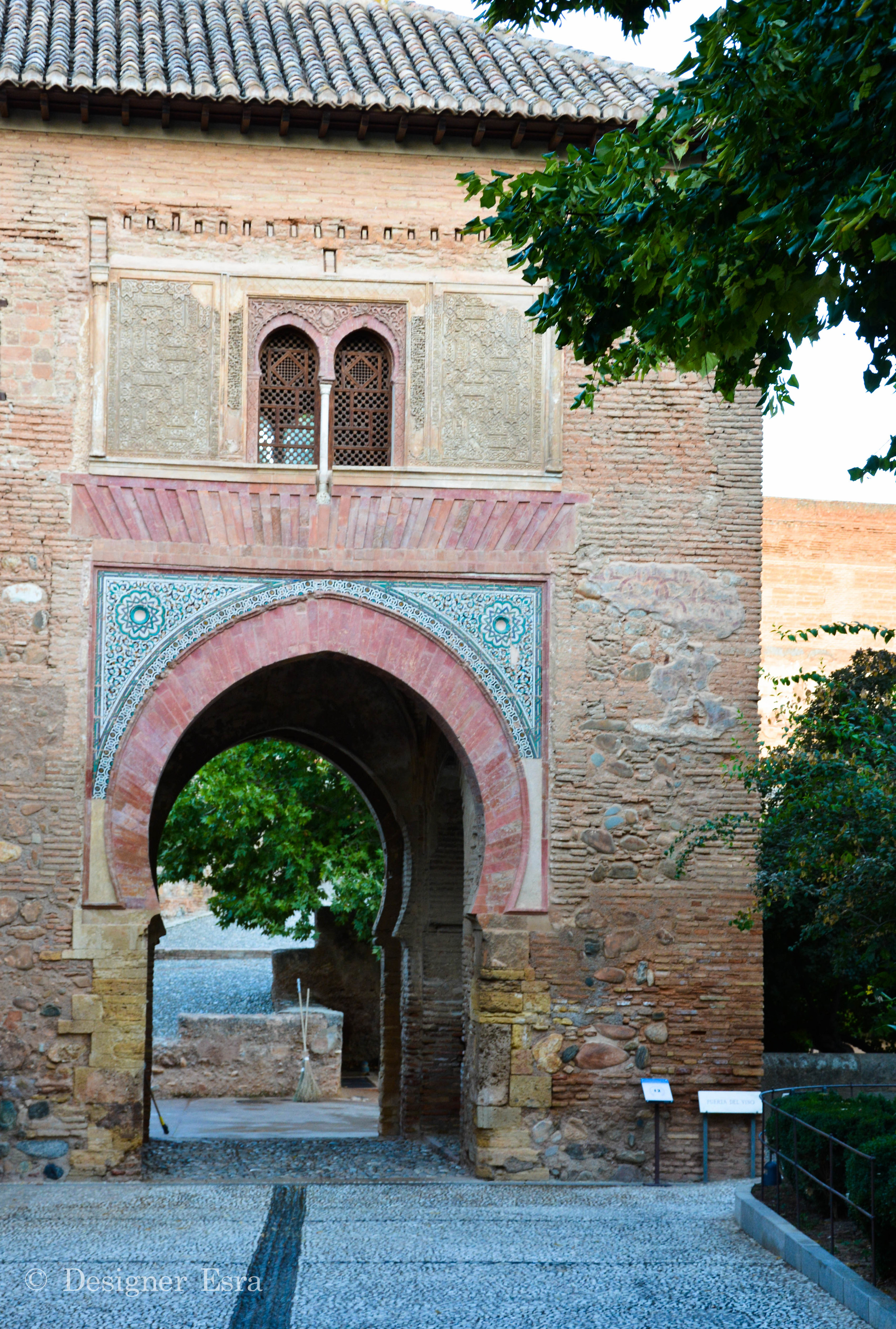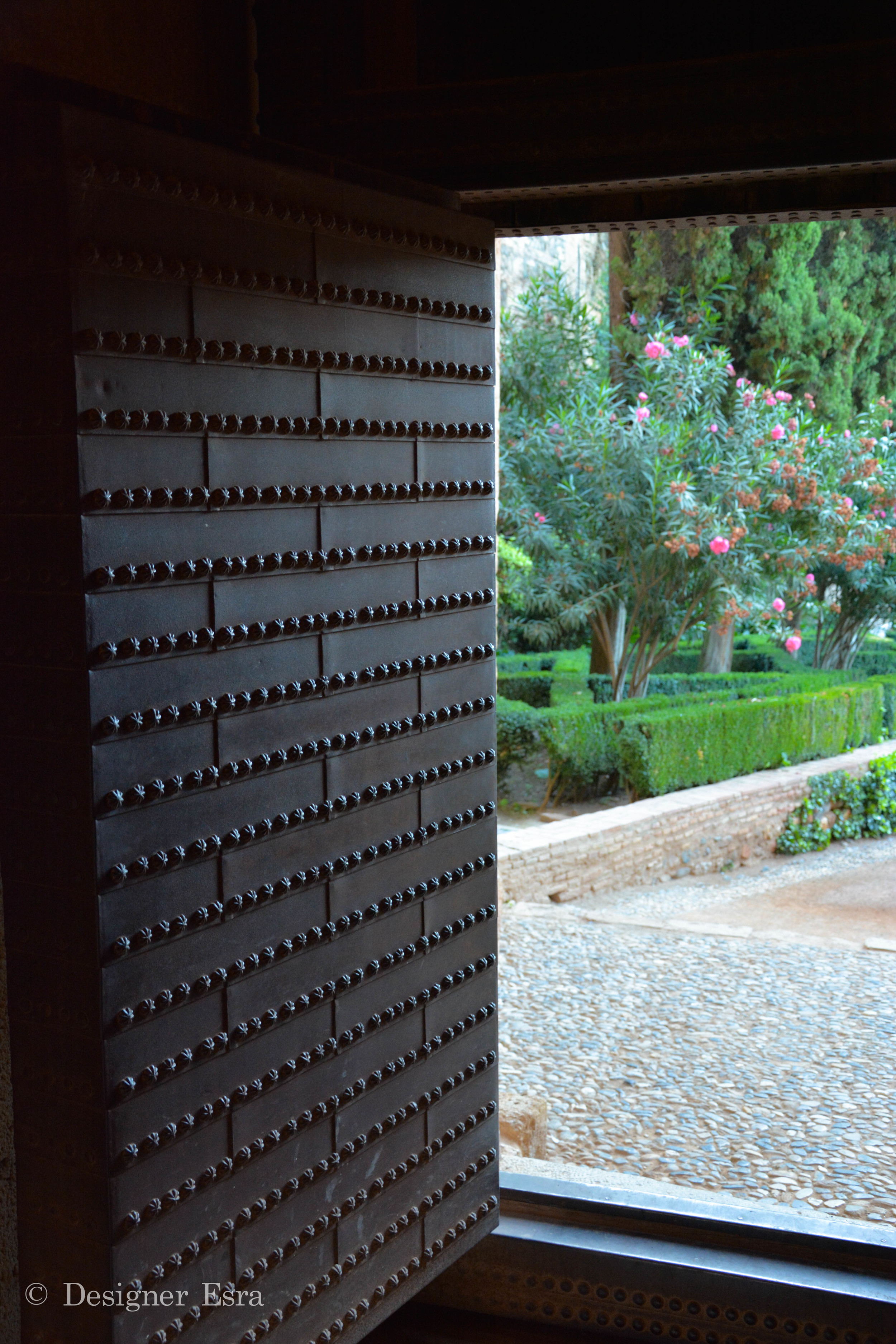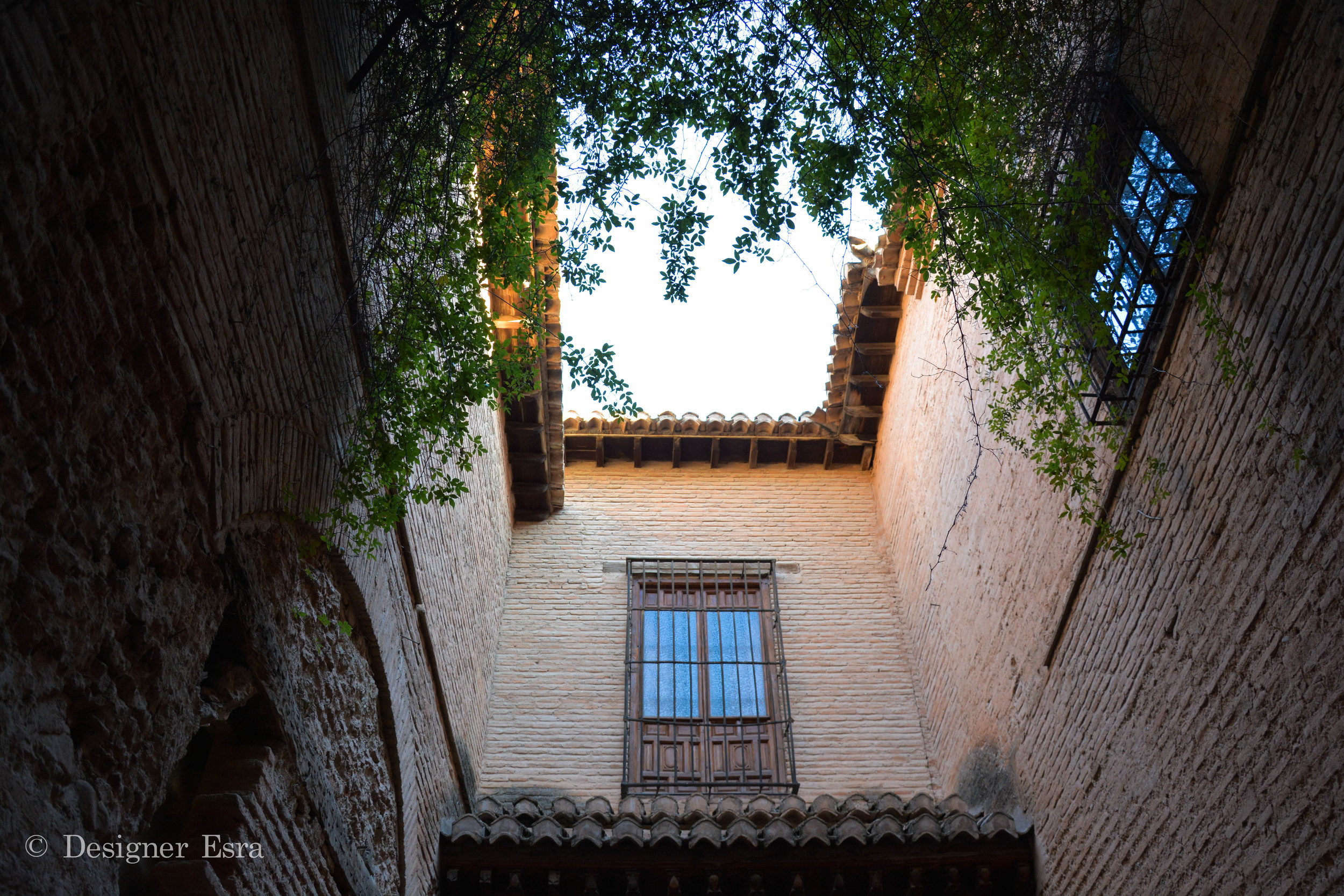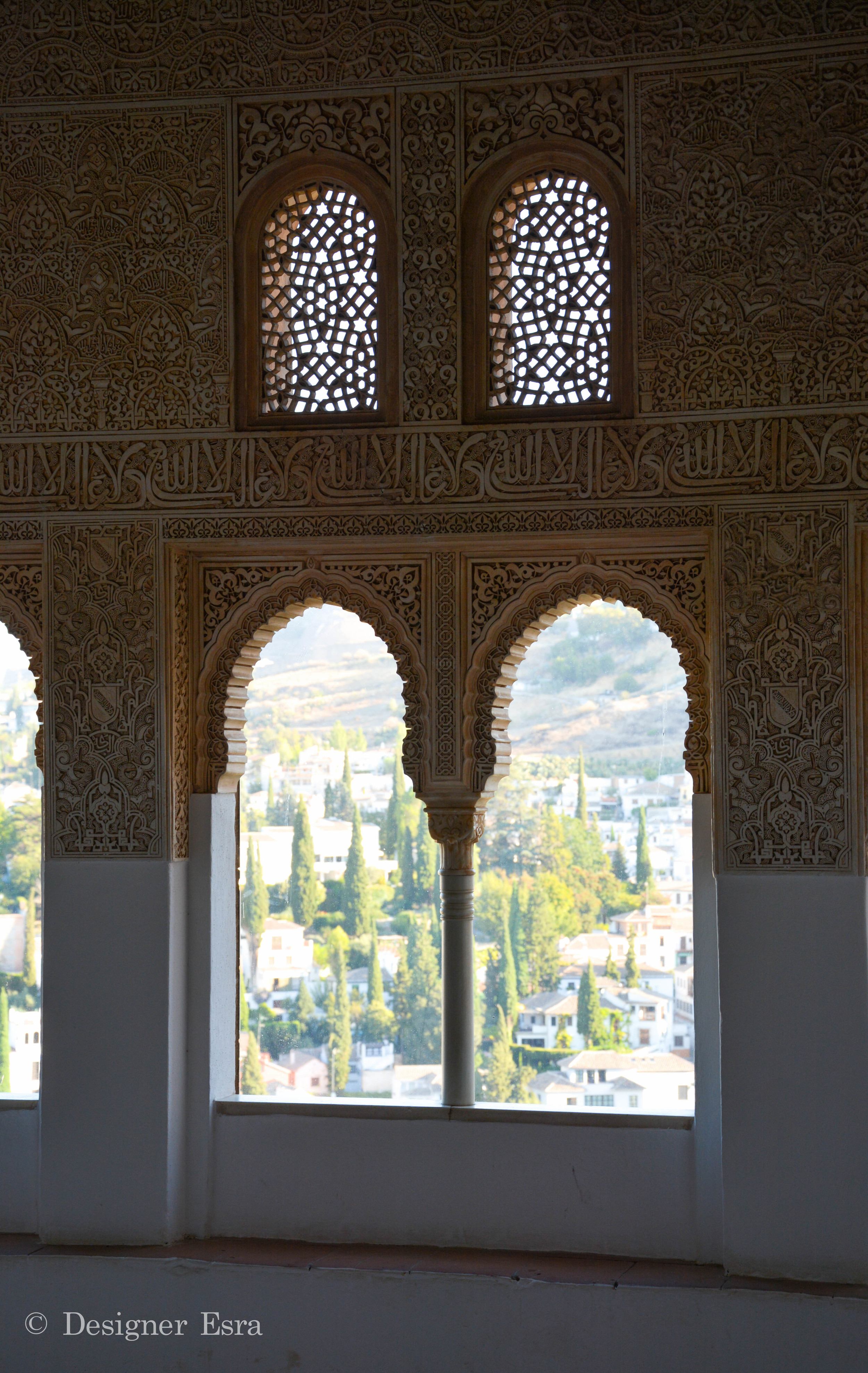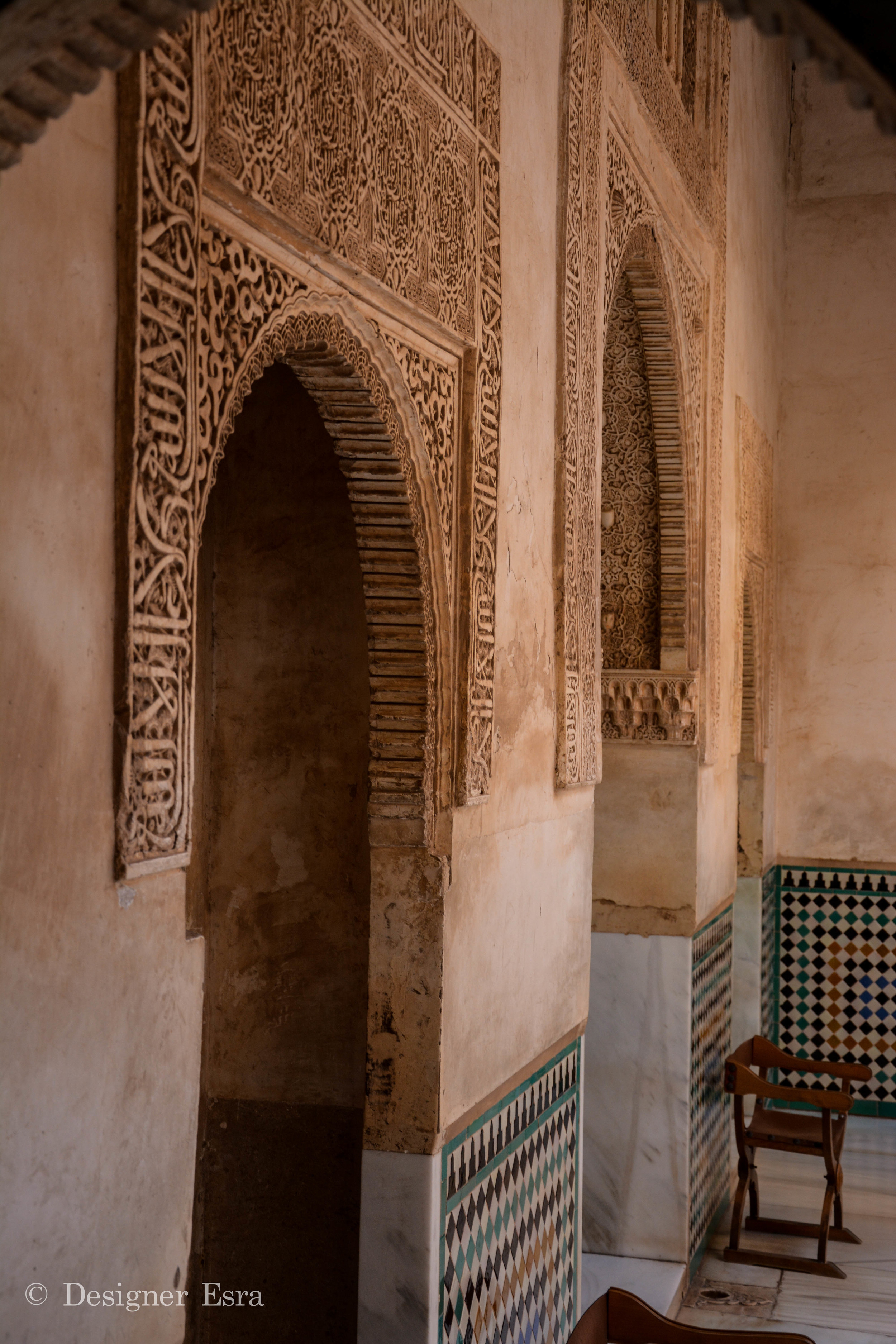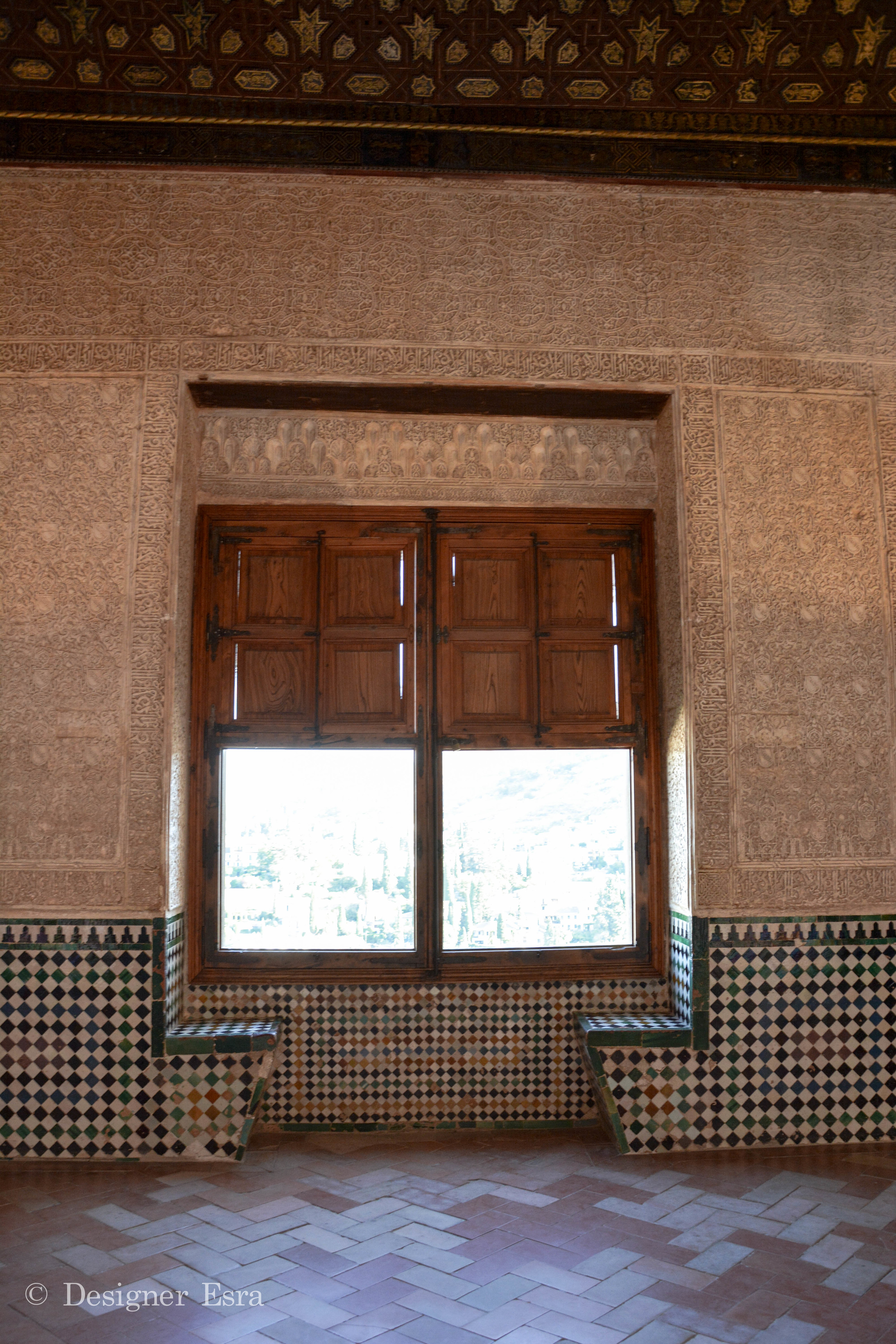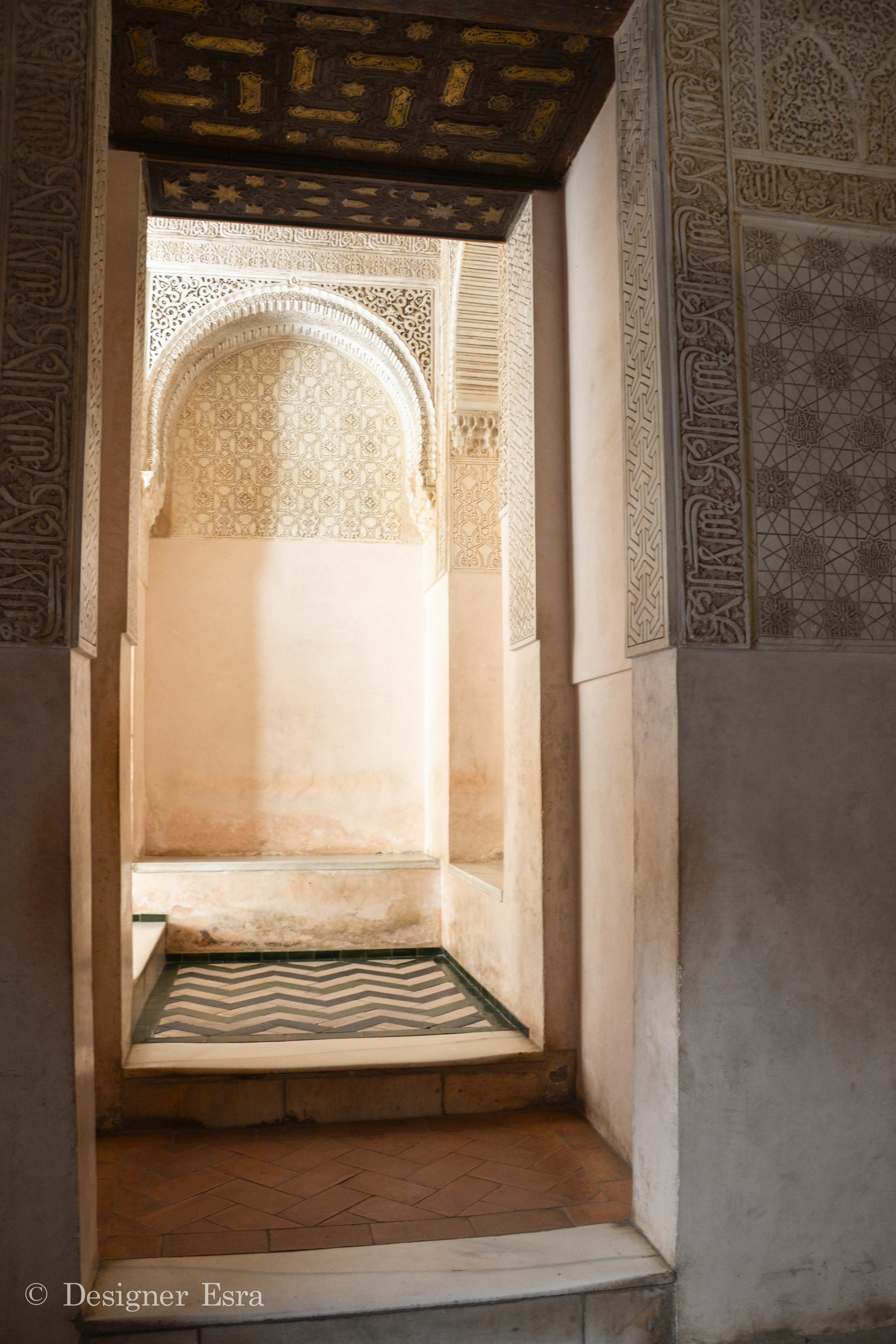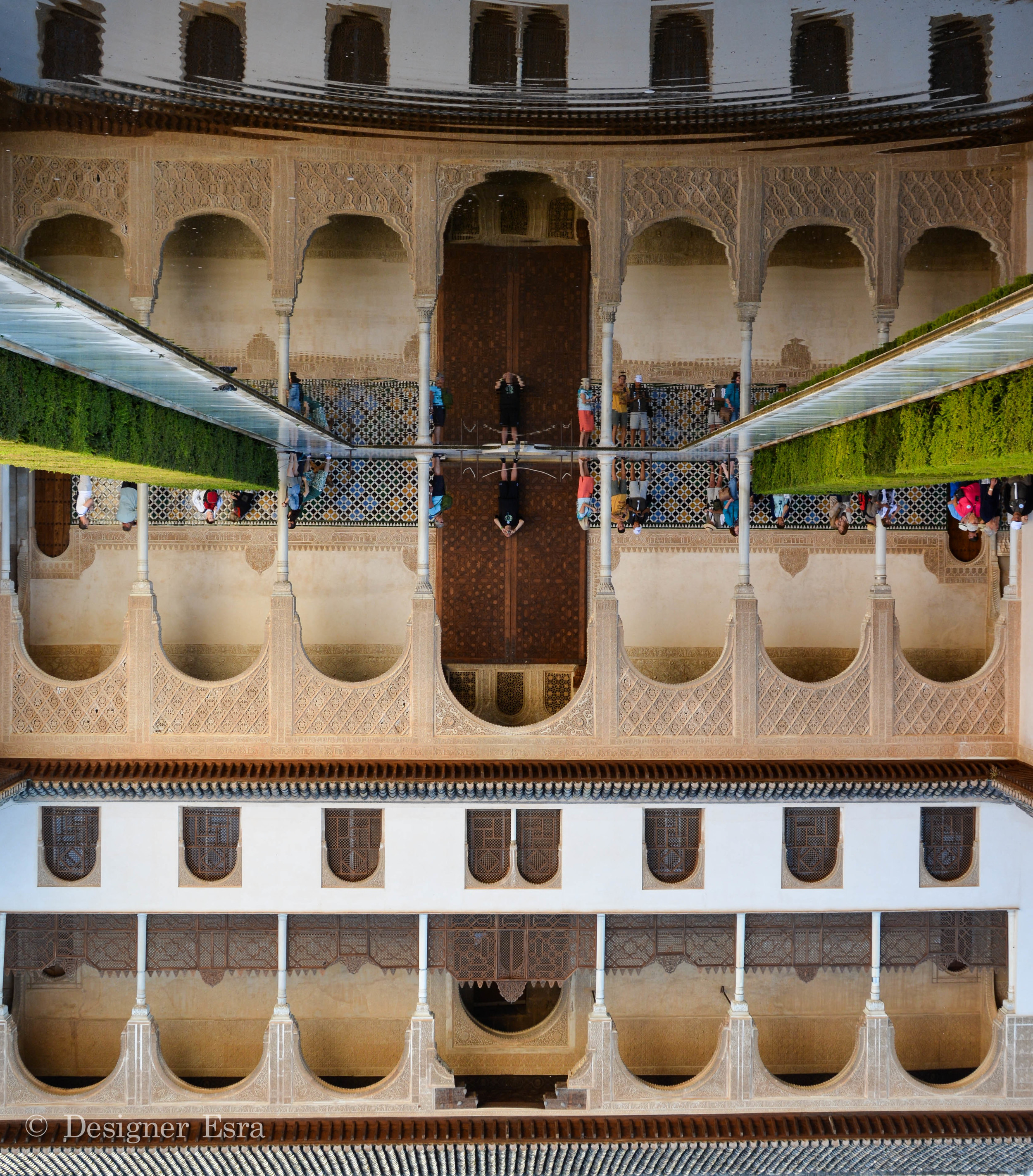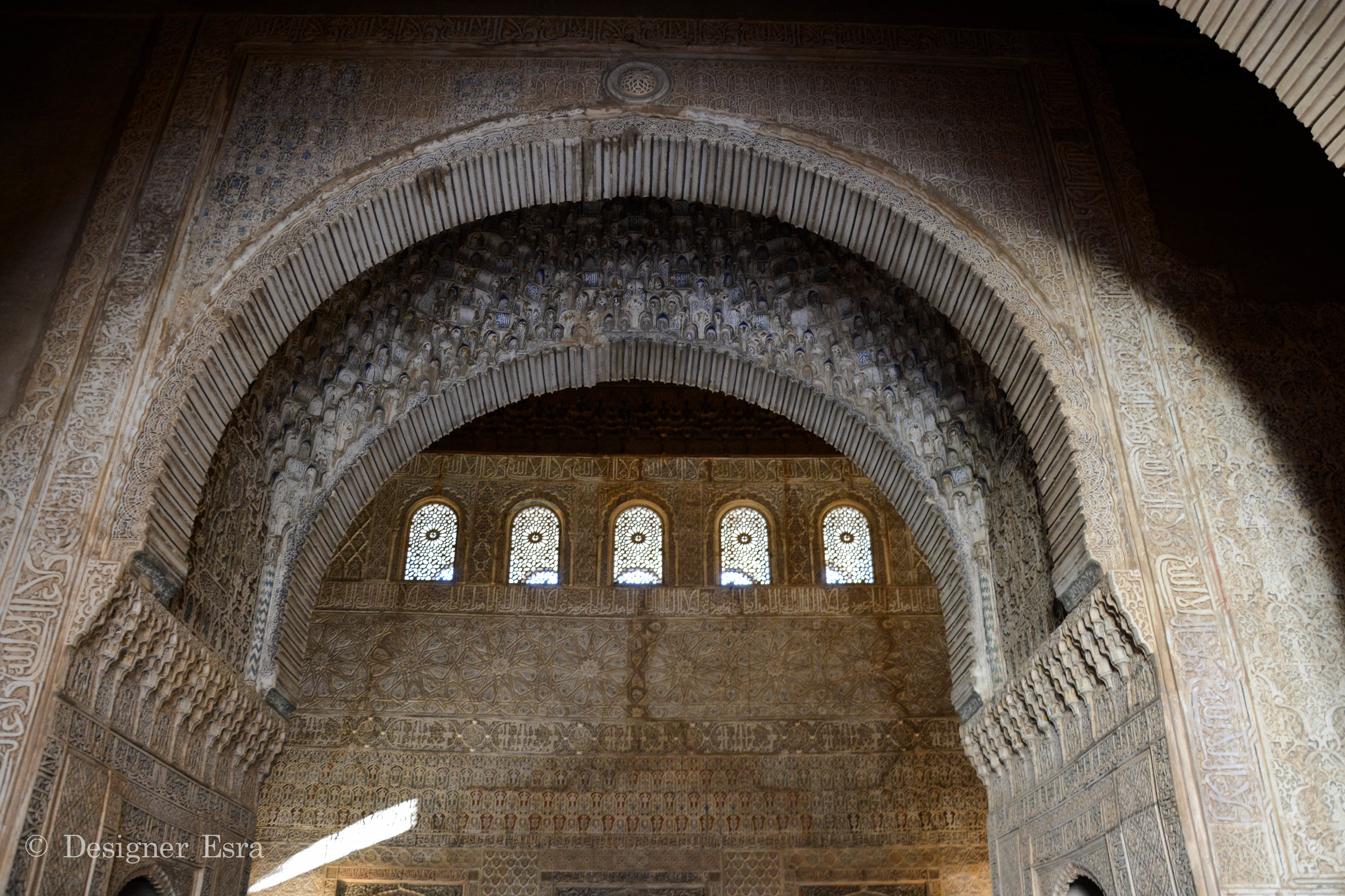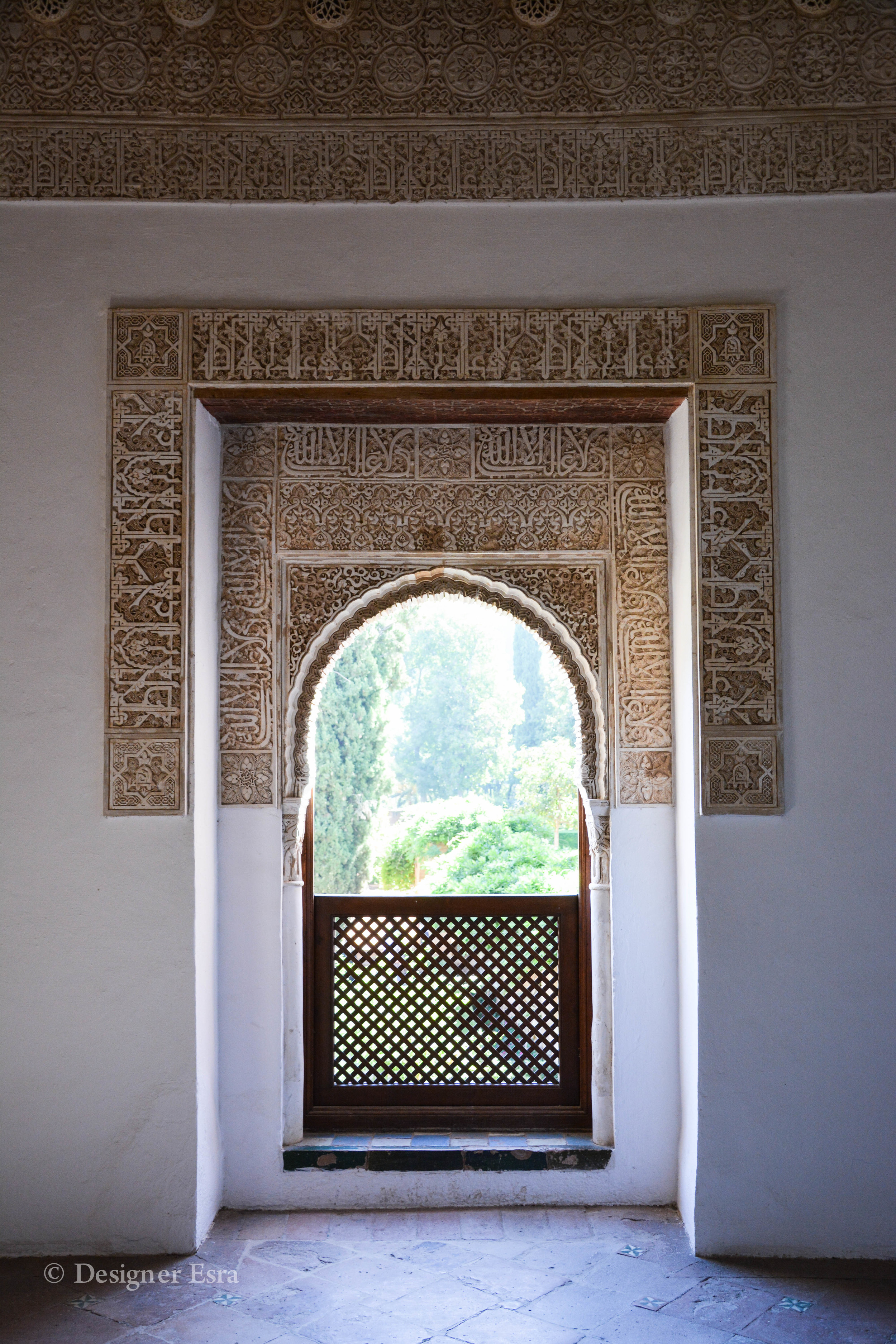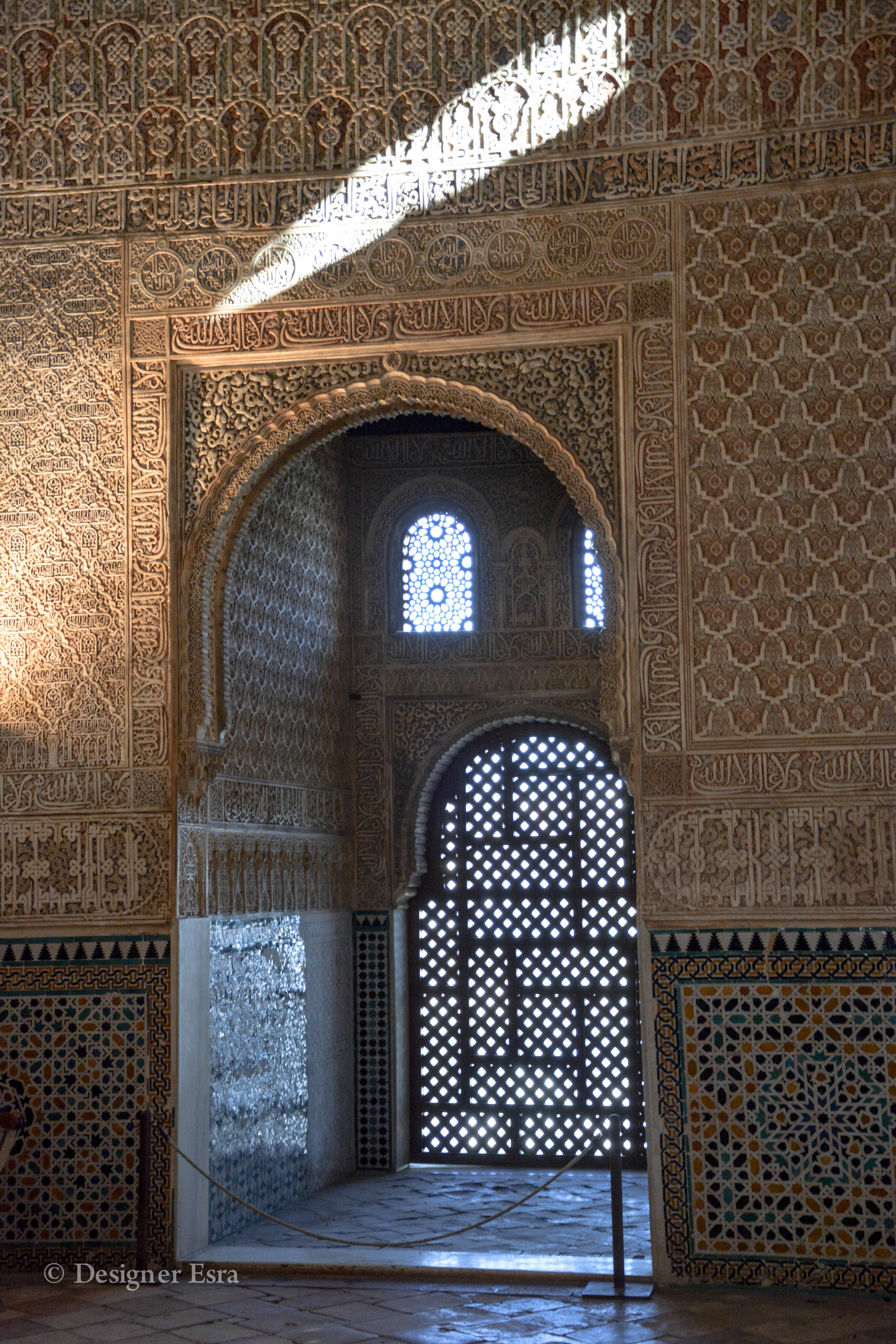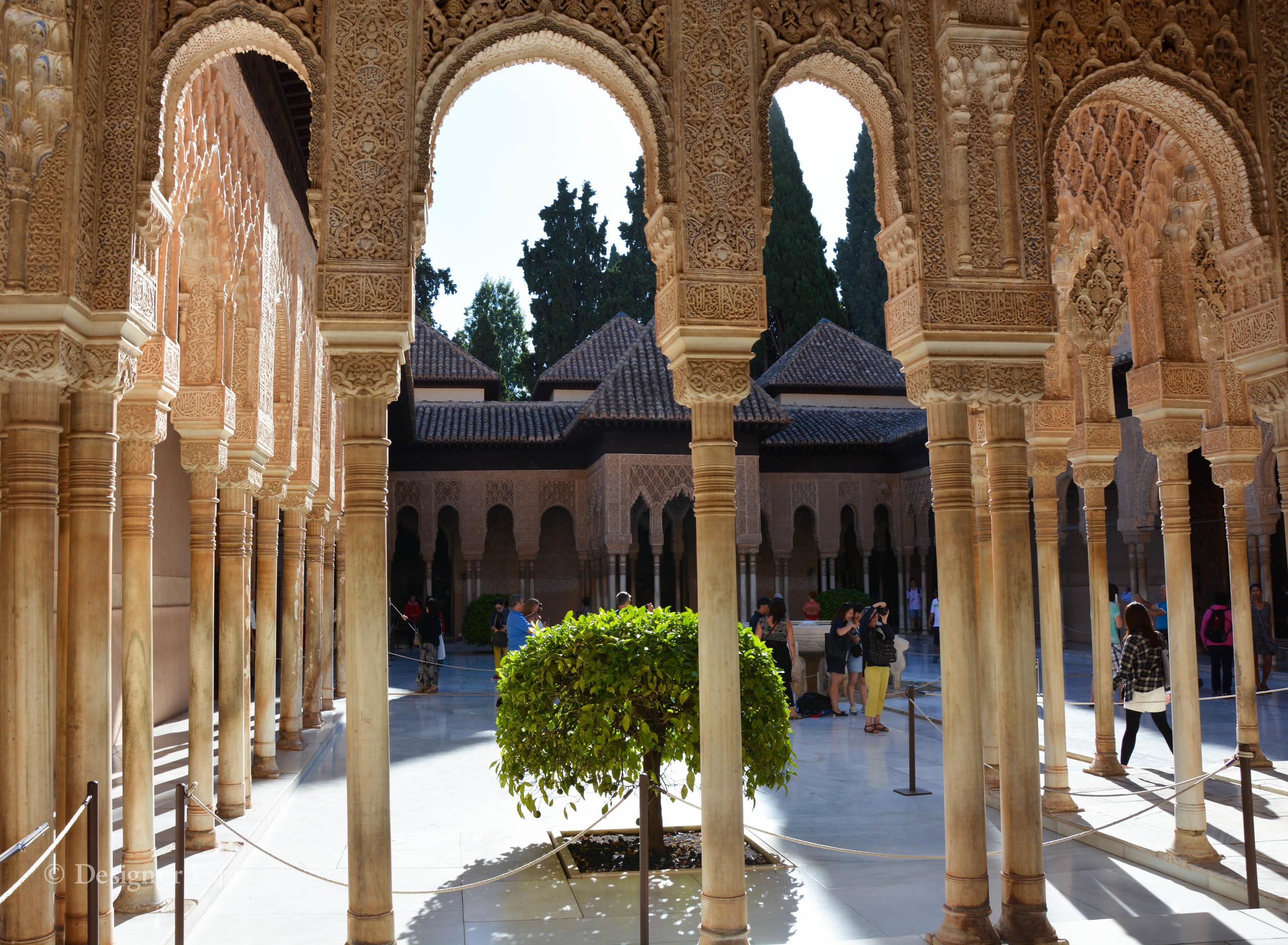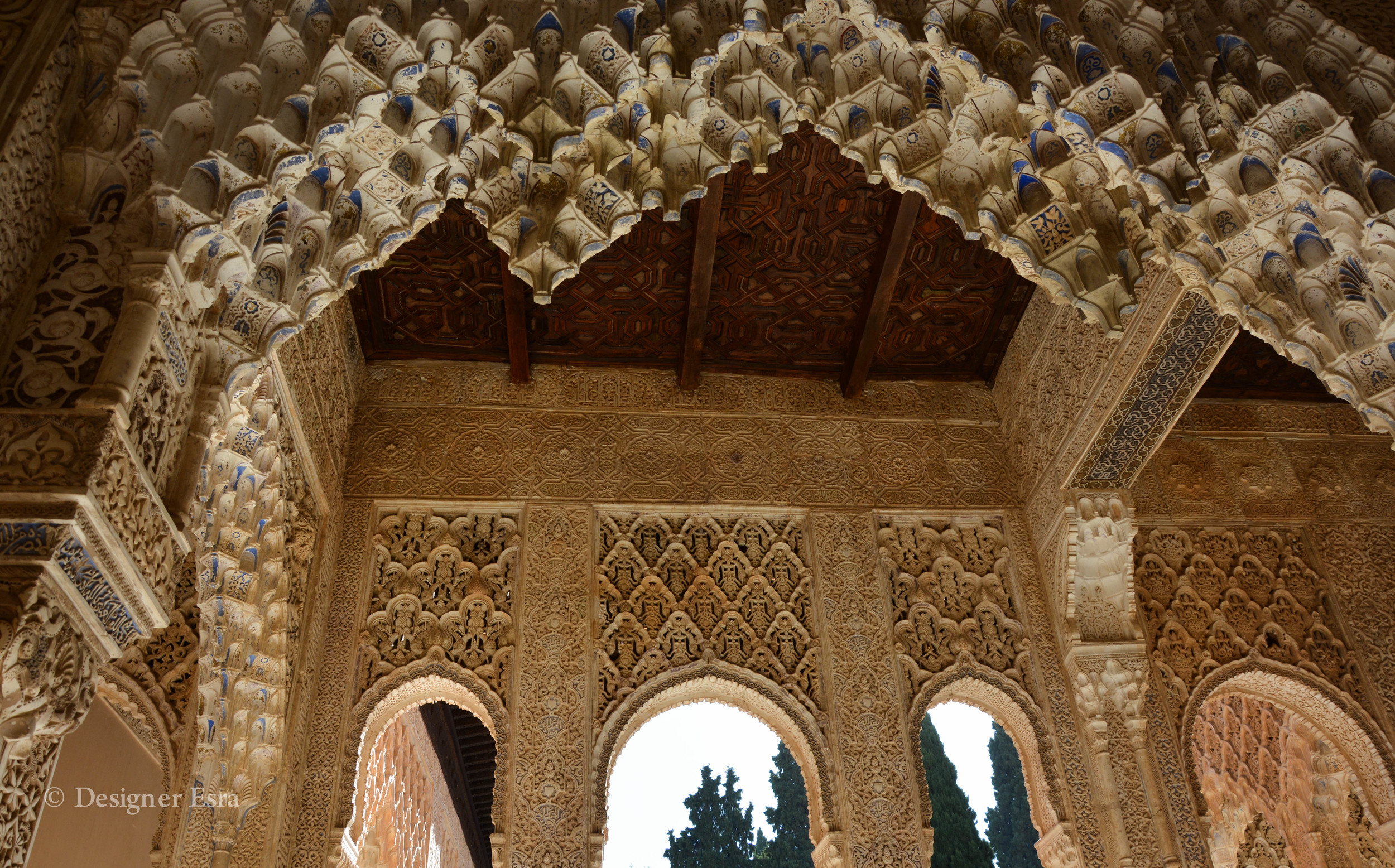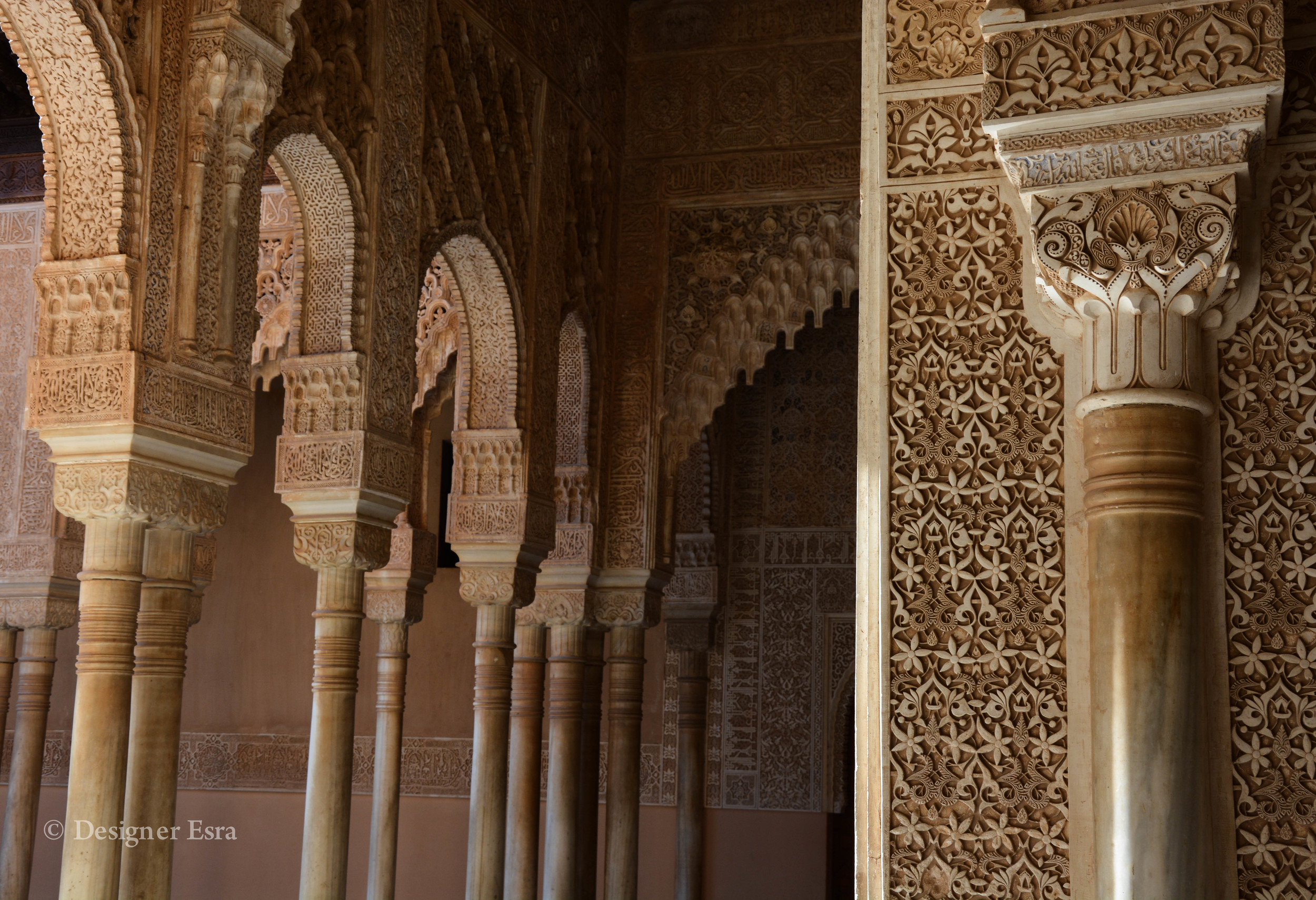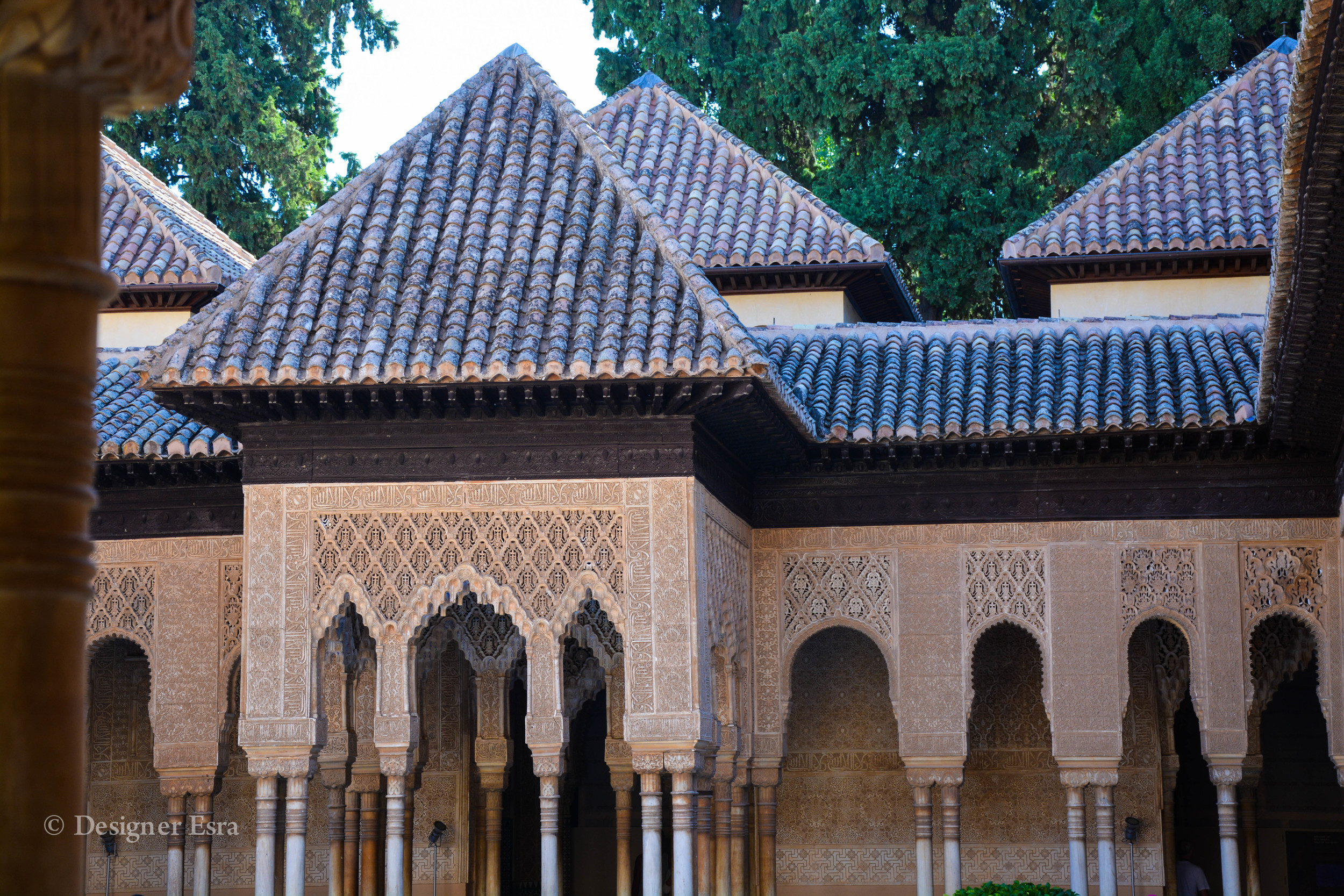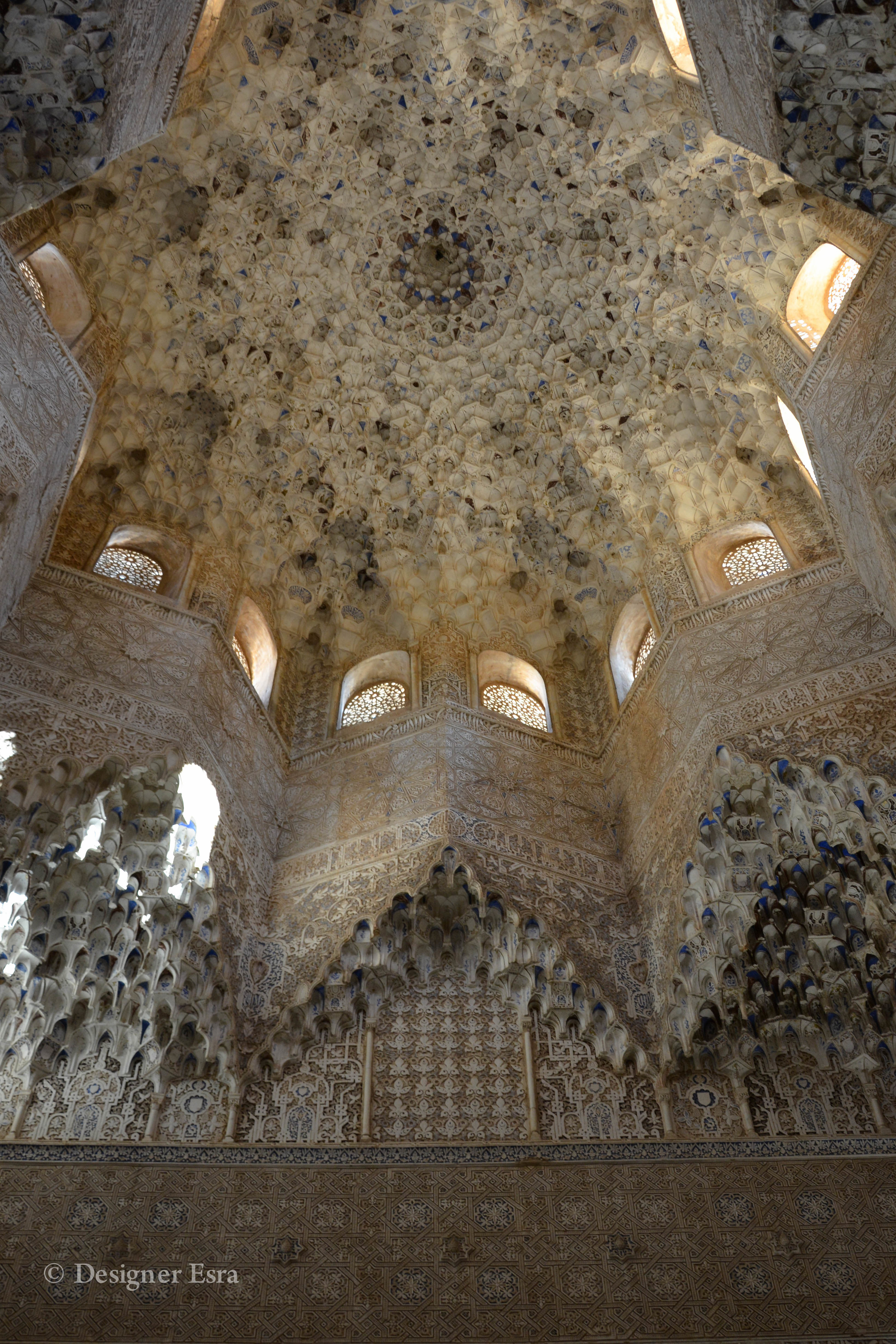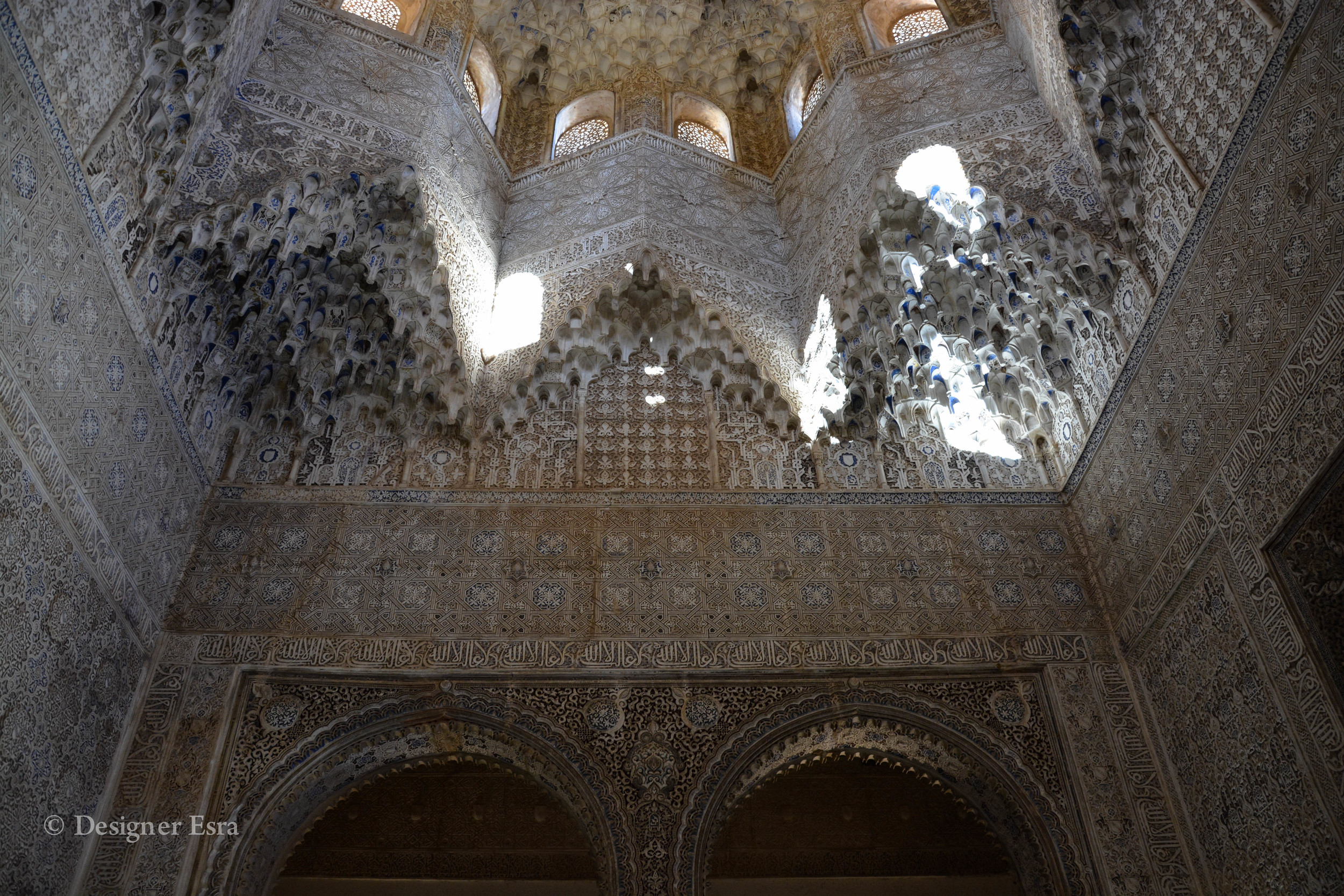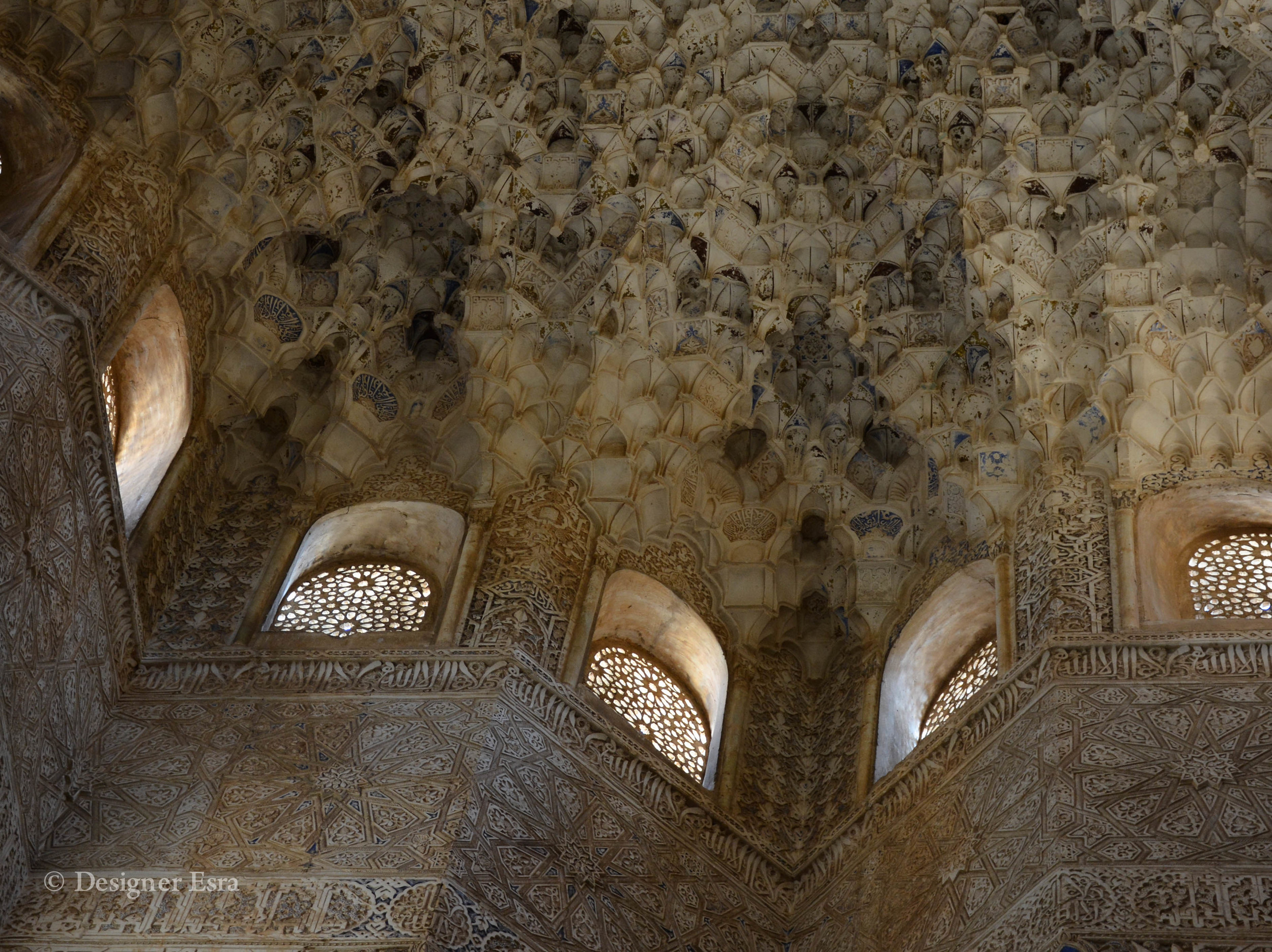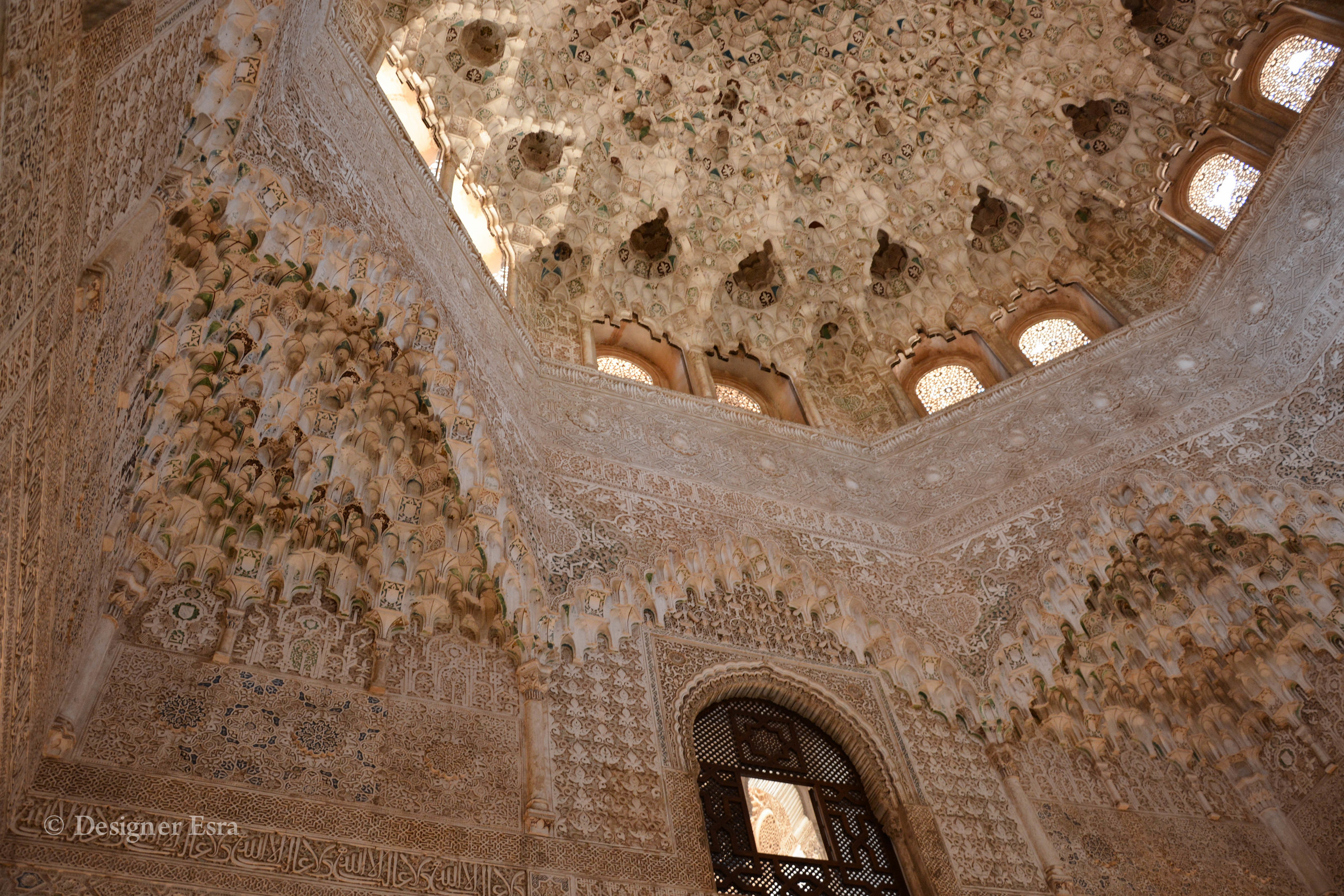Alhambra Palace is the gem and highlight of Granada. Million visitors go there annually to admire the beauty of the architecture and the interior design. The name means red in Arabic and it is pronounced Alhamra without the B. It was used for the redness of the used materials. The palace first started as a military area for it's unique location that was hard to get to in the 9th century (Alhambra.org, 2015). In the 13th century, King Mohammed ibn Yusuf ben Nasr turned it to his place of residency (Alhambra de Granada, 2015) . Some of the patterns in the Alhambra has his name carved in them. After the Christian takeover, Alhambra undergone few changes. It was abandoned in the 18th century . In the 19th century, it was considered as a heritage, protected site by the UNESCO. You can find more on the Alhambra history and details in the UNESCO website.
It's so beautiful that one post is not enough to share all the things I saw, so there are few parts to this Alhambra post. I will start with the structure of the place. In the 14th century, three palaces were built: the Comares Palace, the Palace of the Lions, and the Partal Palace. The unique thing about Alhambra is the complex relationship between the structure and the interior space and how they intersect (Khan Academy,2015). More Architectural information and details could be found in the Khan Academy Website.
After the first three photos, all the rest snaps are in the order of what I saw first.
Resources: Alhambra.org,. 'Alhambra History'. N.p., 2015. Web. 7 Mar. 2015. Alhambra de Granada,. 'Historical Introduction - History'. N.p., 2015. Web. 7 Mar. 2015. Khan Academy,. 'Khan Academy'. N.p., 2015. Web. 7 Mar. 2015.
